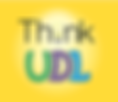
Keywords:
Service Learning Project, Human Sexuality, Student Engagement
Presented by:
Christopher Stark, Concordia University Ann Arbor
Key Statement:
Student learning is facilitated by presenting a related article and inviting others to view and discuss the impact of pornography on individuals, relationships, and society.
Abstract:
Research has found that service-learning projects may help students reach higher learning goals and increase student engagement in the class, including in a human sexuality course. The goal of this project was to learn about sexual addiction, especially pornography and its impact on individuals, relationships, and society. The project consisted of three main parts. First, students were asked to review and present scholarly articles related to pornography. Second, students created a brochure to advertise and invite others to view the impact of pornography. The last part consisted of students’ reflections on the service-learning project and how it impacted their learning.
Learning Outcomes:
Describe a way to increase student learning in human sexuality course.
Apply an active learning method to increase student engagement.
Use a service-learning project to teach students and create public awareness on sexual addiction.

Hear it from the author:
TRANSCRIPT:
Research has shown that to achieve higher learning goals and increase student engagement, it is important to get students to connect the content of what they are studying to their own lives and the real world. One way to do this is through a public awareness project. This project was conducted to improve students’ knowledge of pornography and sexual addiction and to raise awareness of how devastating pornography is to the human brain, human relationships, and society.
The project consisted of five main parts for the students:
1. They viewed a documentary series about pornography and sexual addiction and participated in a discussion facilitated by the instructor.
2. They reviewed and presented scholarly, peer-reviewed articles related to pornography.
3. They created a brochure to advertise and invite others to attend an event to learn about the impact of pornography.
4. They attended the event, presented posters based on the articles reviewed, and engaged in discussion with guests.
And finally,
5. They wrote reflections on the public awareness project and how it impacted their learning.
What were the students’ responses after reflecting on the project?
See the poster and visit with the presenter at the session in Traverse City.
References
Currie-Mueller, J. L., & Littlefield, R. S. (2018). Embracing service learning opportunities: Student perceptions of service-learning as an aid to effectively learn course material. Journal of the Scholarship of Teaching and Learning, 18(1), 25–42. https://doi.org/10.14434/josotl.v18i1.21356
Jenkins, D.D. (2017). Utilizing service learning in a college-level human sexuality course. American Journal of Sexuality Education, 12(1), 20–34. https://dx.doi.org/10.1080/15546128.2016.1266454
Pentecost, V., Willis, A. M., & Jenkins, D. D. (2019). Twas a Thursday in Class…. Journal of Community Engagement and Scholarship, 11(1), 59–62. https://doi.org/10.54656/MMGW6962
Valdez, C. E., & Lovell, J. L. (2022). What psychology students want from service-learning. Teaching of Psychology, 49(3), 258–268. https://doi.org/10.1177/00986283211021075






%20-%20640x200.jpg)

